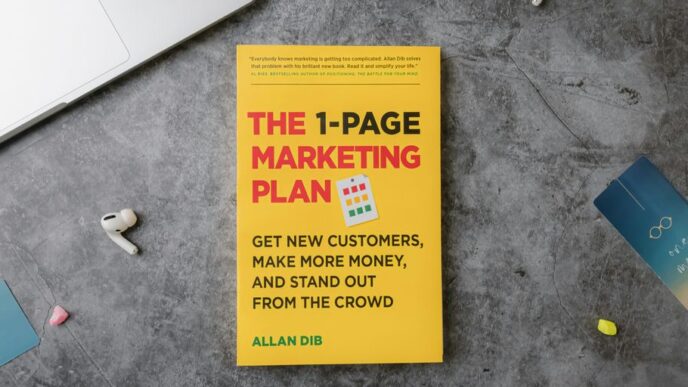Personal finance management (PFM) apps have become essential tools for individuals seeking to manage their finances more effectively. With the increasing complexity of financial products and the rising cost of living, these apps offer users the ability to track spending, budget effectively, and achieve financial goals. However, with a plethora of options available in the market, how can PFM app providers stand out? The answer lies in engaging content marketing.
Content marketing is a strategic approach focused on creating and distributing valuable, relevant, and consistent content to attract and retain a clearly defined audience—and, ultimately, to drive profitable customer action. For PFM apps, this means developing content that not only educates and informs users but also engages them on a deeper level, fostering trust and loyalty. This comprehensive guide explores the various strategies and tactics that can be employed to create an effective content marketing plan for personal finance management apps.
Understanding Your Audience
The cornerstone of any successful content marketing strategy is a deep understanding of the target audience. For PFM apps, the audience typically includes a diverse group of individuals ranging from millennials just starting their financial journey to seasoned professionals looking to optimize their financial management.
- User Personas: Develop detailed user personas to represent different segments of your audience. These personas should include demographic information, financial goals, pain points, and preferred content formats. For instance, a user persona might be “Sarah, a 30-year-old professional who wants to save for a home and prefers consuming content via videos and blog posts.”
- User Research: Conduct surveys, interviews, and focus groups to gather insights into your audience’s preferences and behaviors. Utilize analytics tools to track user interactions with your app and website to identify patterns and trends.
- Segmentation: Segment your audience based on factors such as age, income level, financial literacy, and goals. This allows for more personalized and relevant content that resonates with each group.
Crafting Valuable and Relevant Content
Once you have a clear understanding of your audience, the next step is to create content that addresses their needs and interests. This content should be valuable, relevant, and tailored to each stage of the customer journey.
- Educational Content: Provide content that educates users about various aspects of personal finance, such as budgeting, saving, investing, and debt management. This could include blog posts, e-books, webinars, and video tutorials. For example, a blog post titled “10 Tips for Creating a Budget You Can Stick To” can help users start their financial journey on the right foot.
- Interactive Tools: Develop interactive tools such as calculators, quizzes, and financial planning templates that users can use to manage their finances more effectively. These tools not only provide value but also increase engagement by allowing users to interact with your content.
- Success Stories and Case Studies: Share success stories and case studies of users who have achieved their financial goals using your app. This not only provides social proof but also inspires and motivates other users.
- Regular Updates: Keep your content fresh and relevant by regularly updating it with the latest financial news, trends, and tips. This shows that your app is a reliable source of current information.
Leveraging Multiple Content Formats
Different users prefer different types of content, so it’s important to leverage multiple content formats to reach a wider audience.
- Blog Posts: Write informative and engaging blog posts on a variety of personal finance topics. Use a mix of long-form articles, listicles, and how-to guides to cater to different reading preferences.
- Videos: Create videos that explain complex financial concepts in an easy-to-understand manner. This could include tutorials, explainer videos, and interviews with financial experts. Videos are particularly effective for engaging younger audiences who prefer visual content.
- Podcasts: Launch a podcast series where you discuss various personal finance topics, interview experts, and share user stories. Podcasts are great for reaching users who prefer audio content and can be consumed on-the-go.
- Infographics: Design visually appealing infographics that present financial information in a clear and concise manner. Infographics are highly shareable and can help increase your content’s reach.
- Social Media Posts: Use social media platforms to share bite-sized content, such as tips, quotes, and statistics. Engage with your audience by responding to comments and messages, and participate in relevant discussions.
Building a Content Calendar
A content calendar is an essential tool for planning, organizing, and scheduling your content marketing efforts. It ensures that you consistently deliver high-quality content and helps you stay on track with your marketing goals.
- Content Themes: Identify key themes and topics that align with your audience’s interests and your marketing objectives. For example, you might focus on budgeting tips in January to help users start the new year with good financial habits.
- Frequency: Determine how often you will publish new content. This could be daily, weekly, or monthly, depending on your resources and audience preferences. Consistency is key, so choose a frequency that you can maintain.
- Content Mix: Plan a mix of different content formats to keep your audience engaged. For example, you might publish a blog post on Monday, a video on Wednesday, and an infographic on Friday.
- Editorial Process: Establish a clear editorial process for creating, reviewing, and publishing content. This should include assigning responsibilities, setting deadlines, and using tools such as content management systems and project management software.
Promoting Your Content
Creating great content is only half the battle; you also need to promote it effectively to reach your target audience.
- Social Media Marketing: Share your content on social media platforms such as Facebook, Twitter, LinkedIn, and Instagram. Use relevant hashtags, tag influencers, and encourage users to share your content.
- Email Marketing: Send regular newsletters and email campaigns to your subscribers with links to your latest content. Personalize your emails based on user preferences and behaviors to increase engagement.
- SEO and SEM: Optimize your content for search engines to increase organic traffic. Use keyword research to identify relevant terms and phrases, and incorporate them naturally into your content. Additionally, consider running paid search campaigns to drive targeted traffic to your content.
- Influencer Partnerships: Collaborate with influencers and financial bloggers to promote your content. Influencers can help you reach a larger audience and lend credibility to your brand.
- Guest Blogging: Write guest posts for reputable financial websites and blogs. This can help you reach a new audience and build backlinks to your site, improving your search engine ranking.
Measuring and Analyzing Performance
To ensure the effectiveness of your content marketing efforts, it’s important to measure and analyze performance regularly. This allows you to identify what’s working, make data-driven decisions, and continuously improve your strategy.
- Key Metrics: Track key metrics such as website traffic, engagement (likes, shares, comments), conversion rates, and return on investment (ROI). Use tools like Google Analytics, social media analytics, and email marketing software to gather data.
- A/B Testing: Conduct A/B tests to compare different versions of your content and identify which performs better. This could include testing different headlines, images, and calls-to-action.
- User Feedback: Collect feedback from your users through surveys, comments, and direct interactions. Use this feedback to understand their needs and preferences, and to identify areas for improvement.
- Regular Reporting: Create regular reports to summarize your content marketing performance. Share these reports with your team and stakeholders to keep everyone informed and aligned.
Staying Ahead of Trends
The digital landscape is constantly evolving, so it’s important to stay ahead of trends and adapt your content marketing strategy accordingly.
- Industry Research: Stay informed about the latest trends and developments in the personal finance and digital marketing industries. Subscribe to industry newsletters, follow thought leaders, and attend conferences and webinars.
- Innovation: Experiment with new content formats, platforms, and technologies. For example, consider incorporating augmented reality (AR) or virtual reality (VR) into your content, or exploring emerging social media platforms like TikTok.
- User-Centric Approach: Continuously refine your content marketing strategy based on user feedback and data. Focus on delivering value to your users and addressing their evolving needs and preferences.
Conclusion
Engaging content marketing is a powerful tool for personal finance management apps looking to differentiate themselves in a competitive market. By understanding your audience, crafting valuable content, leveraging multiple formats, building a content calendar, promoting your content, measuring performance, and staying ahead of trends, you can create a content marketing strategy that drives user engagement, builds trust, and ultimately leads to increased adoption and retention of your app.
Remember, the key to successful content marketing is to focus on delivering value to your users. When your content helps users solve their financial challenges and achieve their goals, they are more likely to become loyal advocates for your brand. So, invest the time and resources needed to create high-quality, engaging content, and watch your personal finance management app thrive.










